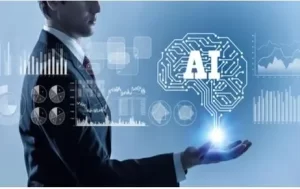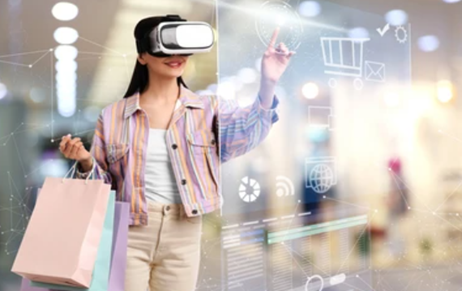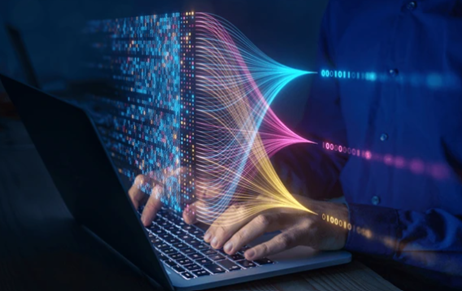In recent years, the world witnessed an exponential surge in the use of Artificial Intelligence…
The Impact of Automation and AI on Creative Expression: Navigating Legal Challenges
Introduction
Imagine a world where making profit out of someone’s else’s hard work was no wrong and adapting other person’s unique creative style to make it your own was a usual chore. Enter the AI algorithms which has proved to revolutionise the realm of creative expression by way of machine learning.
Machine Learning, a subset of artificial intelligence which incorporates the ability to learn from the existing copyrighted works and generate creative expressions like poems, music, novels, artwork or even movies. These outcomes of creative expression pose several legal questions which lack legal precedents but are in the dire need of answers, as with developing technology, the question marks would be bigger and bolder.
This article discusses one of the core issues pertaining to the usage of the copyrighted work as the training data in the machine learning algorithms. The law of Copyrights grants exclusive rights to authors over their original works, including the rights to reproduce, distribute, and publicly display their creations. When copyrighted works are used as input for machine learning, questions arise regarding the extent to which such use is permissible under existing legal frameworks.
This article delves into the legal landscape surrounding the creative expression generated by the AI by way of ‘learning’ the unauthorised copyrighted data with reference to the protection conferred under the doctrine of Fair Use in USA and Fair Dealing in India.
Fair Use and Fair Dealing
The Copyrighted works being used as the training data has the potential to undermine the conventional creative process. These uses frequently take place without the explicit consent of copyright owners and rely on exceptions and restrictions to copyright law, with fair use and fair dealing serving as the two most significant limitations in the US and India, respectively. These principles are used to decide whether a specific use of a copyrighted work is permissible.
Fair Use in the USA
Fair use is usage of any copyrighted work for a limited and transformative purpose. Basically, this use can be done without authorisation from the copyright owner, and stands as a defence against copyright infringement.
The four factors typically considered in determining fair use are:
- Purpose and character of the use: It helps the court decide whether the use is transformative, i.e, whether it adds new expression or meaning to the original work.
- Nature of the copyrighted work: Whether the work is more creative in nature.
- Amount and substantiality of the portion used: Whether the portion of the copyrighted work used is appropriate in relation to the new work is judged.
- Effect upon the potential market: Whether the use of the new work deprives the owner of the original work of income or disrupts a potential market for the copyrighted work.
What is transformative use?
To determine whether a certain use is fair or not, analysing the “outcome” or the new work is crucial. This is where doctrine of transformativeness comes into the picture. It scrutinizes the outcome and measures if use of a copyrighted work adds value by portraying it in a different wat or for a different purpose from the original.

It is pertinent to note that the 4 factors are not considered as a strait jacket formula but depends on case-to-case basis. In the matter of AI generated work in US, even though the work may be considered ‘transformative’, but copyright protection would be granted only to the human authored work, even if the same is done with the help of AI.
Fair Dealing in India
In India, the concept of fair dealing is used for the limited use of copyrighted material for specific purposes. The Act provides for several purposes considered fair dealing, including research, private study, criticism, review, news reporting, and judicial proceedings.
Just like fair use doctrine, fair dealing involves a case-to-case approach, considering aspects such as the purpose and character of the use, the nature of the copyrighted work, the amount used, and the effect on the potential market for the original work. However, unlike fair use in the USA, fair dealing in India has specific purposes stipulated under the copyright act.
If we consider AI generated works in India, then by virtue of Section 2(d)(vi), the copyright can only be conferred to the person who causes the computer generated work and not to the computer itself. Therefore, AI cannot be granted copyright even if its work comes under the purview of fair dealing. However, this erects a question of liability. For instance, if the work created by an AI infringes someone’s copyright and fall out of the purview of Fair Dealing, then: Who shall be liable? And how the rights of the original creator would be protected?
Non-Expressive Fair Use and AI
Both the countries India and US, do not grant rights to the works solely created by the machines. This is the case because, historically, mechanical processes have been treated differently from protectable expression under copyright law as they are seen as mere machinery that lacks innovation or originality. This viewpoint has influenced the theory of “non expressive” fair use, which permits computers to copy and extrapolate data from works protected by copyright in ways that would be unlawful if done by people.
However, because machine learning technology functions differently from conventional search engines, concerns are raised. A huge amount of copyrighted work is analysed as part of machine learning, which then creates new outputs based on patterns and algorithms. This raises concerns about the intended purpose of the usage and how it may affect the market for the original works, both of which are important considerations in the examination of fair use.
The scepticism of machine’s capacity to generate or value authorial expression has long been a recurring subject in copyright law. The law stipulates that a human author must create the work in order to have right in the same. Although the mistrust for machines diminishes as technology advances, however, there is still a perception that machines lack in conveying authorial expression. However, gradually, as people become more acquainted with emerging technologies and their capabilities of creative expression, the initial scepticism tends to fade.
Recent developments in machine learning impede the notion that unique personality traits are restricted to expression by humans. Machine learning methods can recognise and imitate distinct characteristics in sensory data, challenging the justification for intellectual property rights centred around unique personality traits.
Therefore, author advocates that the works authored or created by machines may very well come under the purview of infringement. To understand it better, let’s take an example,
Let’s say an AI algorithm is trained to produce original remixes using an extensive set of copyrighted music. The AI system uses current copyrighted songs’ musical elements, patterns, and structures to produce new compositions that showcase originality and innovation.
Fair Use in the USA: In the USA, the fair use doctrine provides the freedom for transformative uses of copyrighted material. The AI-generated remixes might qualify as fair use if they can be seen as transformative and give the original music new expression or meaning.
Fair Dealing in India: Under fair dealing in India, the specific purposes listed in the Copyright Act must be taken into consideration when determining whether AI-generated remixes are legitimate. The use of AI remixes for critique, review, or private study may be considered fair dealing if other requirements, such as proportionate use and low commercial impact, are met.
Remixes of music created by artificial intelligence have become more prevalent on social media. Some artificial intelligence (AI) algorithms examine copyrighted songs to produce original remixes that generate a lot of interest and engagement. Users frequently share these AI-generated remixes as a form of amusement or to highlight the capabilities of the algorithm.
If music is generated by an AI without human intervention, incorporating copyrighted work. And if the same does not qualify for Fair Use or Fair Dealing defence, the question arises as to whether the AI itself should be held liable for copyright infringement. If liability is assigned to the AI, the issue of sanctions becomes relevant. It may appear logical that if AI does not possess legal rights, it should not be subjected to sanctions for infringement. However, this perspective is inherently flawed, particularly in light of the exponential growth of AI capabilities. It is imperative to address these issues utmost seriousness to not only fill the persisting legal lacunae but most importantly to safeguard the rights of original creators. Safeguarding the principles of intellectual property while adjusting the legal framework to account for the intricacies of AI-generated content is a constant challenge that calls for careful assessment and proactive efforts.
Conclusion
The use of copyrighted works as training data for machine learning algorithms has prompted debates about the extent to which such use is permissible under existing copyright laws. To address the legal challenges, a holistic approach is required. The primary step must be to update copyright laws in consonance with the developing technology. Further, certain algorithms should be authorised which keep a check on AI created works present in public domain. It is pertinent to understand that the issue would resolve when stakeholders, including legal experts, policymakers, AI developers, and creative professionals, engage to address emerging challenges protect the rights of original creators, foster innovation, and ensure a responsible environment for AI-generated creative expression.
Author : Shambhavi Sharma, A Student at Institute of Law, Nirma University. in case of any queries please contact/write back to us via email to chhavi@khuranaandkhurana.com or at IIPRD.
References
- https://www.theverge.com/23444685/generative-ai-copyright-infringement-legal-fair-use-training-data
- http://docs.manupatra.in/newsline/articles/Upload/460E95D3-4C55-4277-8151-543A90D9B8B8.pdf
- https://www.scconline.com/blog/post/2023/04/15/impact-of-us-copyright-office-guidelines-on-ai-generated-work/
- https://www.ip-watch.org/2017/08/23/dilemma-fair-use-expressive-machine-learning-interview-ben-sobel/



